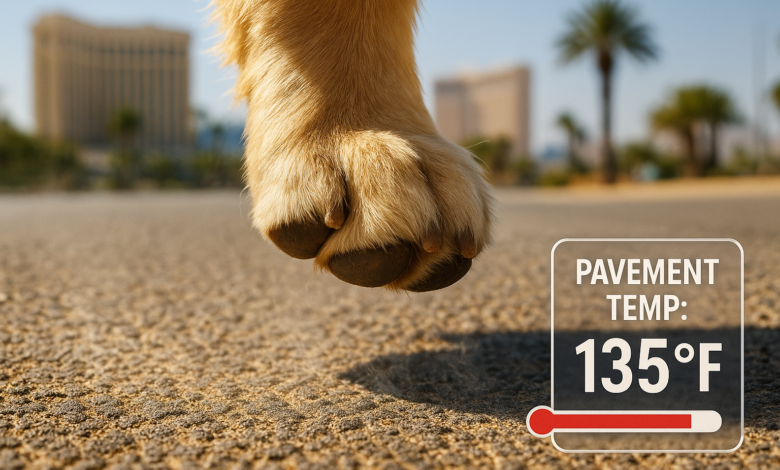We may earn a commission when you click on links across our website. This does not influence our opinions — learn more.
How Hot Does the Pavement Get in Las Vegas?

If you’re walking your dog in Las Vegas during the summer, there’s one thing you need to be extra cautious about — pavement temperature. While the air might read 100°F on your weather app, the surface of sidewalks, streets, and even parking lots can be far hotter. In fact, in direct sun, pavement in Las Vegas can reach 130°F to 160°F, depending on the material. That’s more than enough to burn your dog’s paws in a matter of seconds.
Why Pavement Heat Is So Dangerous for Dogs
Dog paw pads are tougher than our skin, but they’re not indestructible. When pavement temperatures rise above 125°F, it can cause pain, blisters, and serious burns within 60 seconds. For comparison, an egg starts to fry at around 131°F. If you wouldn’t walk barefoot on the ground, neither should your dog.
Many pet owners make the mistake of thinking it’s safe to walk early in the morning or after the sun sets, but here’s the thing: pavement retains heat well into the evening. Even after the air starts to cool down, sidewalks and asphalt can remain dangerously hot for hours. That’s why it’s essential to do the “five-second test”: place the back of your hand on the ground. If you can’t hold it there comfortably for five full seconds, it’s too hot for paws.
When and Where It’s Safer to Walk
If you’re staying on or near the Las Vegas Strip — or anywhere in the valley — your best bet is to walk your dog during the early morning (before 8 a.m.) or late evening (after sunset). Look for shaded areas, grass, or artificial turf whenever possible. Parks with tree cover, indoor dog-friendly spaces, and apartment dog runs with shade structures are good alternatives.
You can also check the ground temperature using an infrared thermometer (they’re inexpensive and easy to carry), or just trust the simple rule: if it’s too hot for you, it’s too hot for them.
Protecting Your Dog’s Paws
If you do need to go out during warmer hours, consider using protective gear like dog booties or paw wax. Booties provide a physical barrier, while paw wax can offer a layer of protection — though not as much as a boot. Keep in mind that dogs may need a little time to adjust to wearing booties, so practice indoors first before relying on them for a long walk.
It’s also smart to bring a portable water bottle and collapsible bowl, not just for hydration but in case you need to rinse their feet or cool them down quickly. Watch for signs of overheating or paw damage, such as limping, licking their feet, or redness between the toes.



